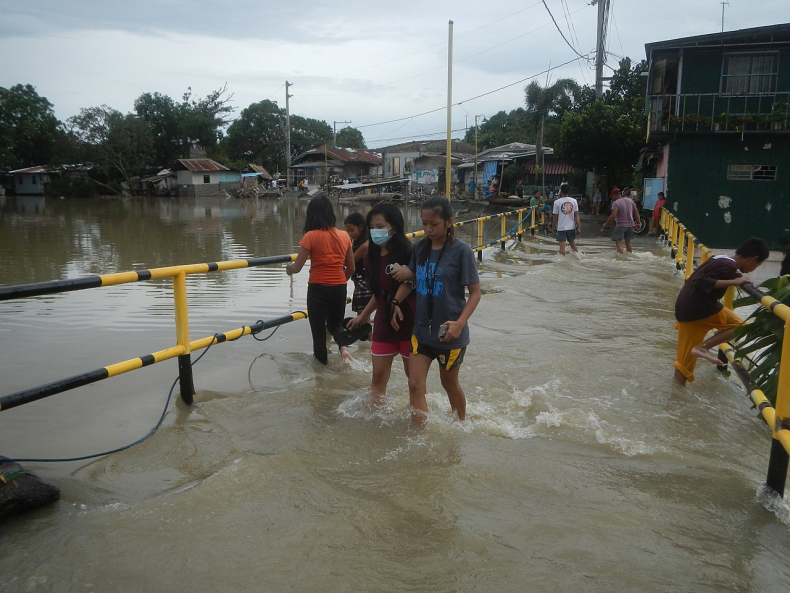This story was originally published by Yale Environment 360 and appears here as part of the Climate Table collaboration.
As the world stumbles toward the Glasgow climate talks, the relevant issues are becoming clearer. Job One: We need to push emissions targets faster and further than we did in Paris. That’s the message that US President Joe Biden is trying to send with his Build Back Better plan, if only Prime Minister Joe Manchin and Her Enigmacy Krysten Sinema get out of the way.
And the second job is obvious too: We need to deliver on the promise dating back to the 2009 Copenhagen climate conference of $ 100 billion a year in “climate finance” flowing to governments in the Global South so they can build their energy from fast growth. systems with renewable energy instead of gas and coal, and so that they can build the seawalls to protect their cities.
And then there is a third bucket of work, a job that has received much less attention during the years of UN negotiations, but that is becoming increasingly urgent. Since the world has delayed action on climate change for so many years, enormous destruction is already taking place. Solar energy buildup comes too late to prevent it, and we can no longer build enough seawalls to keep it at bay. Someone has to pay for all this destruction of life and property, what the UN process calls “loss and damage”, and it is quite clear that these someone live in countries that got rich by burning fossil fuels.
In the 2015 Paris negotiations, those rich countries, including the United States, included a clause in the final text that postponed this reckoning. “Article 8 of the agreement,” it read, “does not imply or provide a basis for any liability or compensation.” But that was many hurricanes and typhoons ago, many epic droughts and ruined crops ago. This time he says Climate Action Network Tasneem Essop, director of the CAN, the losses and damages will be a “litmus test” for the success of the talks. “We want to go to the wall on this.”
Harjeet Singh, CAN Senior Advisor, is one of the world’s leading voices on these disaster payment issues (Hard-earned insight: One of his first positions at ActionAid India involved spending two years on the Andaman and Nicobar Islands, helping to lead the response to the 2004 Indian Ocean tsunami). “There are economic and non-economic costs that result both from extreme weather events like hurricanes and floods and from slow-onset weather processes like sea level rise and salinization,” he said in an email. “Loss and damage include permanent and irreversible losses, such as those of lives, livelihoods, homes and territory, for which an economic value can be calculated, and also non-economic impacts such as loss of culture, identity and biodiversity, that cannot be quantified in monetary terms ”.
What people are reading

TO 2020 working document of European NGOs presented just a few examples:
- “Research in The Gambia found that the drought caused widespread crop failure, leading to higher food prices. Jobs outside the agricultural sector were scarce and many households were forced to sell assets to meet their basic needs, which had long-term consequences ”. (It is worth noting that the Gambia is so far the only country on earth which has established policies that guide it to reduce emissions to the Paris targets).
- “In Bhutan, changes in rainfall patterns reduced the amount of water available to irrigate rice. While many farmers started growing crops that required less water, these adaptation measures had costs and were often not enough to minimize loss and damage. In fact, the costs “often pushed households further into poverty.”
- In Kenya, farmers facing drought “were often forced to sell livestock and other assets and / or take children out of school so they could contribute to the household income.” Such “erosive coping” techniques, the report warned, “have long-term consequences, especially for girls at home.”

Putting numbers on this picture of suffering is, of course, difficult. But the attempts to do so are enlightening and surprising. Singh says that studies predicting loss and damage by 2030 have found figures of roughly $ 400 billion a year for developing countries; by 2050, two studies found that annual damages in the developing world would average between $ 1.1 trillion and $ 1.8 trillion.
It’s easier to show who owes the money – all you have to do is look back and see where carbon emissions historically come from. (Since carbon remains in the atmosphere for centuries, the CO2 pumped from, say, American suburbs in the 1950s is causing as much damage as the CO2 that comes out of Chinese smokestacks today, and given the large scale of time of western development, there is much more of the former than the latter. If you have any doubts, check out this excellent Data visualization from CarbonBrief). EcoEquity, the San Francisco-based nonprofit that specializes in delving into these international responsibility issues, has expressed the concept in slightly different terms: To meet its historic climate responsibility, the US does not need to reduce its emissions by 100 percent. penny. Need to cut them 195 percent – which is physically impossible if you limit your efforts to your own shores, but becomes practical if you offer a large amount of help abroad.
Opinion: Damages caused by increasingly extreme weather events are hitting developing countries especially hard, even though they have contributed the least to climate change, writes @billmckibben. # COP26 #ClimateFinance #ClimateChange
Reduced to dollar terms, a report of US civil society groups earlier this year argued that the US should contribute at least $ 800 billion in international climate finance between 2021 and 2030, evenly divided by funding for mitigation, adaptation and loss and damage caused by irreversible climate change ($ 267 billion each). ) “As a down payment in good faith.”
The equity of that basic claim seems flawless – you broke it, you bought it. The only real argument against it is the same one used against, say, reparations for slavery and racial profiling: Can’t we let the past be past? In reality, however, the central argument against either of them is: you can’t make me. If the americans resist paying $ 10 a month more in electricity bills to deal with climate change, it’s not hard to imagine what right-wing politicians will try to do by compensating Kenyans for lost crops.
But the art of international diplomacy partly involves making the unpleasant more and more plausible, until it somehow becomes inevitable. The United States took a firm stance against “liability and redress” in Paris, but chief negotiator Todd Stern said that when it comes to “loss and damage”, we have “made it clear that we support the concept in general terms.” Singh suggests that since the US clearly fears any unlimited legal liability, the starting point for progress “could be to convince them to help establish a loss and damage financing system under the UN that is based on in solidarity “, that is, not in legal culpability, but in” responding to the needs of developing countries facing the climate crisis. ” There are even strong self-interest arguments, Singh notes. “As climate impacts increase,” he says, “any further delay will make the situation unmanageable in the future, making demands more drastic, and may also affect trade relations with those countries.”
No one expects this dilemma to be resolved in Glasgow; in fact, it will be a victory only for the issue of loss and damage to appear on the official agenda in the future. But it’s not that there will be fewer floods, typhoons or fires in the next few years. As droughts worsen, so will the thirst for justice.
Reference-www.nationalobserver.com